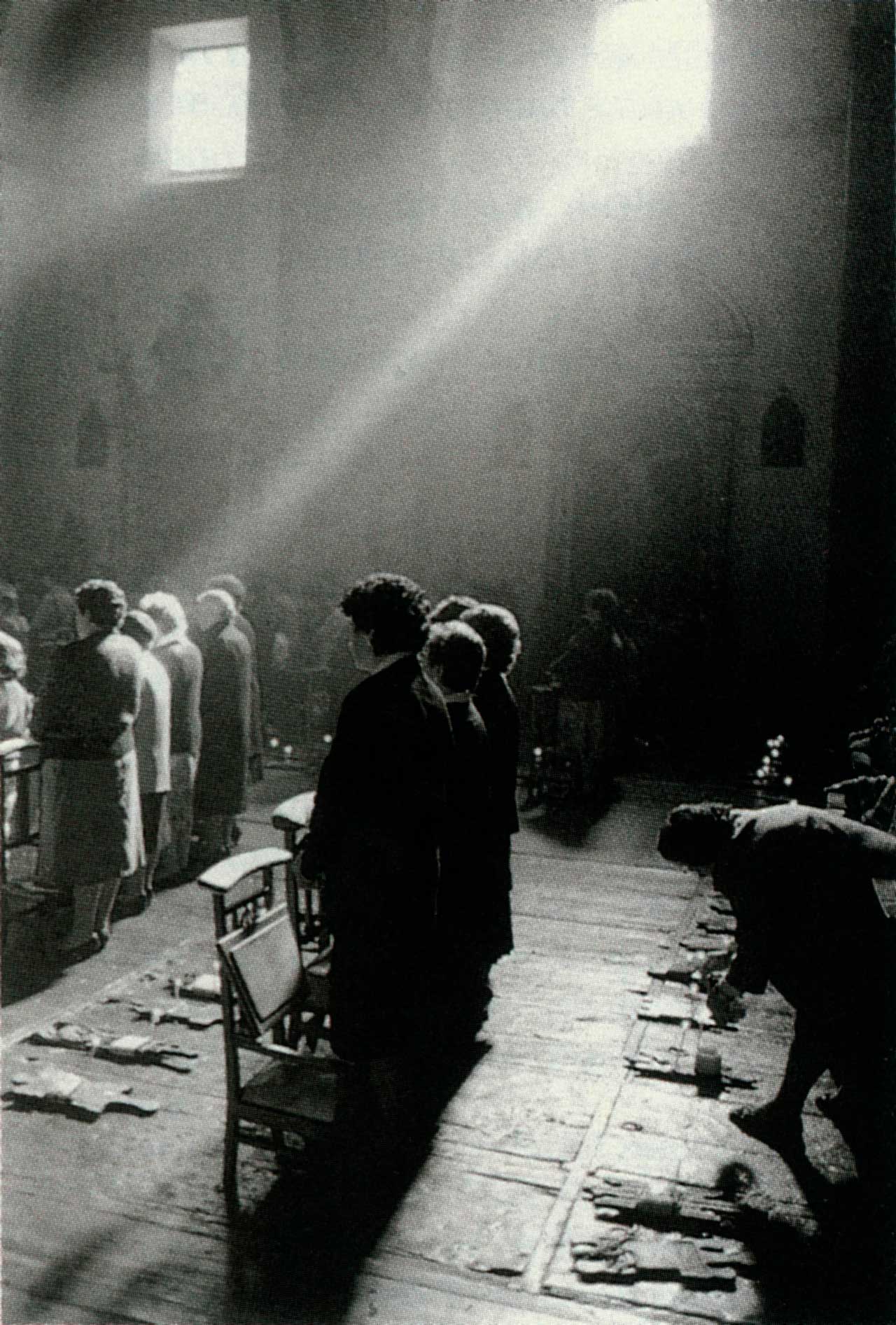Diferencia entre revisiones de «Ritos funerarios en vasconia/en»
De Atlas Etnográfico de Vasconia
(Página creada con «====[/atlas/ritos/Toque-de-campana-anunciando-la-muerte-Beasain.jpg|Death knell. Beasain (G). Source: José Zufiaurre, Etniker Euskalerria Groups.|Tolling the bell was a ve...») |
(Página creada con «{{DISPLAYTITLE: Funeral Rites in the Basque Country}} {{#bookTitle:Funeral Rites in the Basque Country | Ritos_funerarios_en_vasconia/en}}») |
||
| (No se muestran 9 ediciones intermedias del mismo usuario) | |||
| Línea 2: | Línea 2: | ||
<languages></languages> | <languages></languages> | ||
| − | {{DISPLAYTITLE: | + | {{DISPLAYTITLE: Funeral Rites in the Basque Country}} {{#bookTitle:Funeral Rites in the Basque Country | Ritos_funerarios_en_vasconia/en}} |
==[landing]== | ==[landing]== | ||
| Línea 24: | Línea 24: | ||
====[/atlas/ritos/Toque-de-campana-anunciando-la-muerte-Beasain.jpg|Death knell. Beasain (G). Source: José Zufiaurre, Etniker Euskalerria Groups.|Tolling the bell was a very effective way of announcing the death in rural settlements.||]==== | ====[/atlas/ritos/Toque-de-campana-anunciando-la-muerte-Beasain.jpg|Death knell. Beasain (G). Source: José Zufiaurre, Etniker Euskalerria Groups.|Tolling the bell was a very effective way of announcing the death in rural settlements.||]==== | ||
| − | ====[/atlas/ritos/Cortejo-funebre-1925.jpg| | + | ====[/atlas/ritos/Cortejo-funebre-1925.jpg|Funeral cortège, c. 1925. Source: Antxon Aguirre, Etniker Euskalerria Groups.|There were specific paths to carry the corpse from the house of the deceased to the church and the cemetery.||]==== |
| − | ====[/atlas/ritos/Mujeres-con-ofrendas-Otxagabia-1920.jpg| | + | ====[/atlas/ritos/Mujeres-con-ofrendas-Otxagabia-1920.jpg|Offering bearers. Otsagabia (N), c. 1920. Source: Fco. Javier Zubiaur and M.ª Amor Beguiristain’s private archive: Roldán and Calle Photographic Studios.|The members of the funeral cortege, relatives of the deceased and neighbours alike, would usually carry offerings of bread and light.||]==== |
| − | ====[/atlas/ritos/Ofrenda-de-luces-Amezketa.jpg| | + | ====[/atlas/ritos/Ofrenda-de-luces-Amezketa.jpg|Light offerings. Amezketa (G). Source: Garmendia Larrañaga, Juan. Neguko Festak. Donostia, 1993, J. Juanes Photographic Archive.|Light offerings would light up the way for the soul of the deceased. And bread would sustain it.||]==== |
| − | ====[/atlas/ritos/Duelo-femenino-Sara.jpg| | + | ====[/atlas/ritos/Duelo-femenino-Sara.jpg|Mourners. Sara (L). Source: Veyrin, Philippe. Pays Basques de France et d’Espagne. Paris-Grenoble, 1951.|Sorrow was expressed by wearing mourning.||]==== |
| − | ====[/atlas/ritos/Anuncio-de-la-muerte-a-las-abejas.jpg| | + | ====[/atlas/ritos/Anuncio-de-la-muerte-a-las-abejas.jpg|Telling the bees. Source: ''Gure Herria''.|Erletxuak, erletxuak, <br />egizute argizaria, <br />nagusia hil da-ta, <br />behar da elizan argia. <br /><br /> |
| + | ''Ritual formula to inform the bees of their keeper’s death''||]==== | ||
| − | ====[/atlas/ritos/Amortajamiento-de-un-nino-Durango.jpg| | + | ====[/atlas/ritos/Amortajamiento-de-un-nino-Durango.jpg|Infant shroud. Durango (B). Source: Gerediaga Association Archive: Germán Photographic Studio.|Jaiotzetik heriotza zor. <br />''When you begin to live, you being to die.''||]==== |
| − | ====[/atlas/ritos/Pipaon-1990.jpg|Pipaón (A), 1990. | + | ====[/atlas/ritos/Pipaon-1990.jpg|Pipaón (A), 1990. Source: Pilar Alonso, Etniker Euskalerria Groups.|Hildakoari hobia eta biziari ogia. <br />''The dead to the grave and the living to the roll.''||]==== |
| − | ====[/atlas/ritos/Hilarriak-Irulegi.jpg| | + | ====[/atlas/ritos/Hilarriak-Irulegi.jpg|Funerary stelae. Irulegi (NB). Source: Michel Duvert, Etniker Euskalerria Groups.|Oilarrak gauez kukurruku jotzen badu, laster izango da gorpuren bat etxe hartan. <br />''A cockerel crowing at sunset, death is looming.''||]==== |
==[related]== | ==[related]== | ||
| − | === | + | ===Outstanding contents=== |
| − | ====[/images/thumb/8/89/7.86_Salida_de_la_casa_mortuoria._Bera_(N)_1995.jpg/1200px-7.86_Salida_de_la_casa_mortuoria._Bera_(N)_1995.jpg| | + | ====[/images/thumb/8/89/7.86_Salida_de_la_casa_mortuoria._Bera_(N)_1995.jpg/1200px-7.86_Salida_de_la_casa_mortuoria._Bera_(N)_1995.jpg|Funeral Rites in the Basque Country|Omens of death|[[PRESAGIOS_DE_MUERTE._HERIOTZAREN_ZANTZUAK/en]]]==== |
| − | ====[/images/thumb/a/ad/7.33_La_muerte_del_justo._Litografia_belga_del_s._XIX_procedente_de_un_caserio_de_Ibarruri_(B).jpg/1200px-7.33_La_muerte_del_justo._Litografia_belga_del_s._XIX_procedente_de_un_caserio_de_Ibarruri_(B).jpg| | + | ====[/images/thumb/a/ad/7.33_La_muerte_del_justo._Litografia_belga_del_s._XIX_procedente_de_un_caserio_de_Ibarruri_(B).jpg/1200px-7.33_La_muerte_del_justo._Litografia_belga_del_s._XIX_procedente_de_un_caserio_de_Ibarruri_(B).jpg|Funeral Rites in the Basque Country|Beliefs about the soul’s destiny|[[CREENCIAS_SOBRE_EL_DESTINO_DEL_ALMA/en]]]==== |
| − | ====[/images/thumb/a/a5/7.84_Conduccion_del_cadaver_por_el_camino_mortuorio_gorpuzbidea._Orexa_(G)._(Representacion).jpg/1200px-7.84_Conduccion_del_cadaver_por_el_camino_mortuorio_gorpuzbidea._Orexa_(G)._(Representacion).jpg| | + | ====[/images/thumb/a/a5/7.84_Conduccion_del_cadaver_por_el_camino_mortuorio_gorpuzbidea._Orexa_(G)._(Representacion).jpg/1200px-7.84_Conduccion_del_cadaver_por_el_camino_mortuorio_gorpuzbidea._Orexa_(G)._(Representacion).jpg|Funeral Rites in the Basque Country|Corpse ways|[[CAMINOS_MORTUORIOS._HILBIDEAK/en]]]==== |
| − | ====[/images/thumb/b/bf/7.259_Antiguo_cementerio_de_Jatsu_(L).jpg/1068px-7.259_Antiguo_cementerio_de_Jatsu_(L).jpg| | + | ====[/images/thumb/b/bf/7.259_Antiguo_cementerio_de_Jatsu_(L).jpg/1068px-7.259_Antiguo_cementerio_de_Jatsu_(L).jpg|Funeral Rites in the Basque Country|Apparitions and wandering spirits|[[APARECIDOS_Y_ANIMAS_ERRANTES._ARIMA_HERRATUAK/en]]]==== |
Revisión actual del 09:10 25 feb 2020

Funeral Rites in the Basque Country
Cultural issues surrounding death as a rite of passage, including death omens, death throes and ritual practices after death.
Light offerings. Amezketa (G). Source: Garmendia Larrañaga, Juan. Neguko Festak. Donostia, 1993, J. Juanes Photographic Archive.



_1995.jpg/1200px-7.86_Salida_de_la_casa_mortuoria._Bera_(N)_1995.jpg)
.jpg/1200px-7.33_La_muerte_del_justo._Litografia_belga_del_s._XIX_procedente_de_un_caserio_de_Ibarruri_(B).jpg)
._(Representacion).jpg/1200px-7.84_Conduccion_del_cadaver_por_el_camino_mortuorio_gorpuzbidea._Orexa_(G)._(Representacion).jpg)
.jpg/1068px-7.259_Antiguo_cementerio_de_Jatsu_(L).jpg)
